
This is one of those tests and write ups I've ben wanting to get around to for some time, but there always seems to be something more immediately urgent to distract me from the effort. Well, there still are those things, but I figured it's time to get this done because I'm seeing signs this well reviewed DAC is going to be replaced soon, as it's being offered at clearance prices by quite a few vendors- which normally indicates that an improved replacement model is in the wings.
AURALiC has introduced an impressively wide range of products since it's relatively recent gestation a few years back- I own this Vega, and I also own a Taurus Pre, which has been previously benched.
This is a nice compact component, but doesn't forgo a wide selection of inputs and outputs, and includes AES/EBU balanced digital inputs as well as balanced analog outputs using the Orfeo modules, for which it's said their tone and performance target was the basic amplifier module used in a variety of Neve consoles back in the day when they were establishing their reputation.


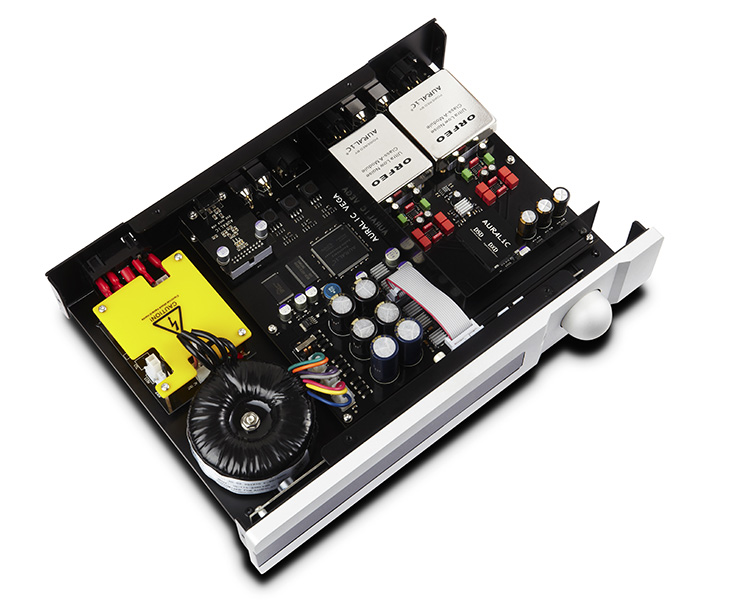
The knob on the right is a rotary encode which serves as an output volume control (digital domain, unfortunately) and also, as it has a push switch function, serves to select menu items and settings such as digital filter options, inputs, etc, if you don't have the remote handy (or if it's lost, or broken, or whatever).
The Vega is considered by many to be one of the better, perhaps the best implementation using the original ESS SABER DAC; this is a 32 bit delta-sigma converter, with a whole bucket full of feature options (including accepting data at up to 1.5MHz), but the general word on the street is that it is somewhat finicky about supporting circuitry to get the best performance (particularly power and references) and many Saber DAC implementations seem to fall short of their potential. AURALiC takes a different approach, not using up sampling available in the DAC, but using their own "Sanctuary" up sampling processor to convert all inputs to 1.5MHz to run the SABER at it's top data rate. If some's good, is more always better?
There are a lot of reviews of this unit on the web, from pure subjective accountings such as at "Six Moons", to ones including good bench evaluations, such as "Secrets of Home Theater and High Fidelity". I tend to do a little bit different set of tests, approaching some issues from other angles than Secrets does, so I'd say this bench look will be complementary to theirs. My favorite online reviewer Stereophile has reviewed the Vega also, and generally got very similar results, but not necessarily identical, which is a bit curious, but then they are using an older generation of Audio Precision analyzer on loan, compared with my APx555, their newest and most sensitive model. I suppose in light of that the differences are to be expected.
This is not as complete a test series as I would like to do, but considering my time issues, better this than nothing?
Also, being pressed for time, I elected to mainly look at 44.1/16 performance, excepting 24bit test at -90dB to see just how well it can do a low level 1kHz sine wave (and since this really highlights the difference in what one is getting between 16 and 24 bit sources.) But if you're like me, there is so much music that you WANT to listen to, which is not available in "audiophile" formats, so 44.1/16 it is (CD)
I didn't do a run through on the digital filter options, but let me summarize to say that Filter1 works in the manner of one's classic brick wall filter, and Filter 4 (favored by most reviewers) uses a minimum phase anodizing filter with minimal pre-ringing and maximum post ringing (the latter being unavoidable if you go for the former). That type of filter is favored by some manufacturers, sometimes exclusively; Ayre Acoustics was one of the earliest proponents of using it. I will note when I use different filters which would impact the results.
First, basic frequency response; I'm showing this with Filter 4, which has the least flat characteristic with the most high frequency roll off (4 is characterized by an earlier, slow roll off and a lower stop band roll off, and more image leakage).
Vega Frequency response with -10dBFS digital input on AES/EBU
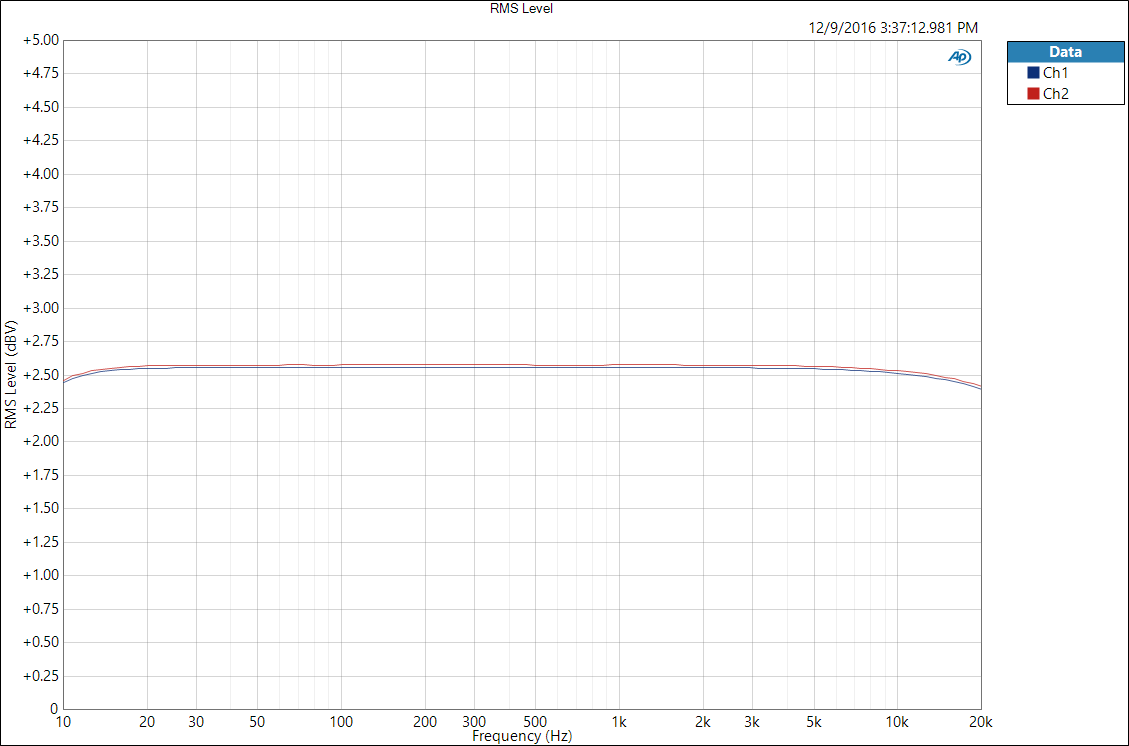
At 20 kHz, we're seeing about 0.25 dB roll off, which as this type of filter goes, is pretty minimal- so I'd say they've done a good job here. Channel balance for left and right channel is very good.
I like to start with looking at things with something as basic as a 1kHz input; you might be surprised how much there is to be learned with this middle of the road approach.
Vega 1kHz input at -40dBFS
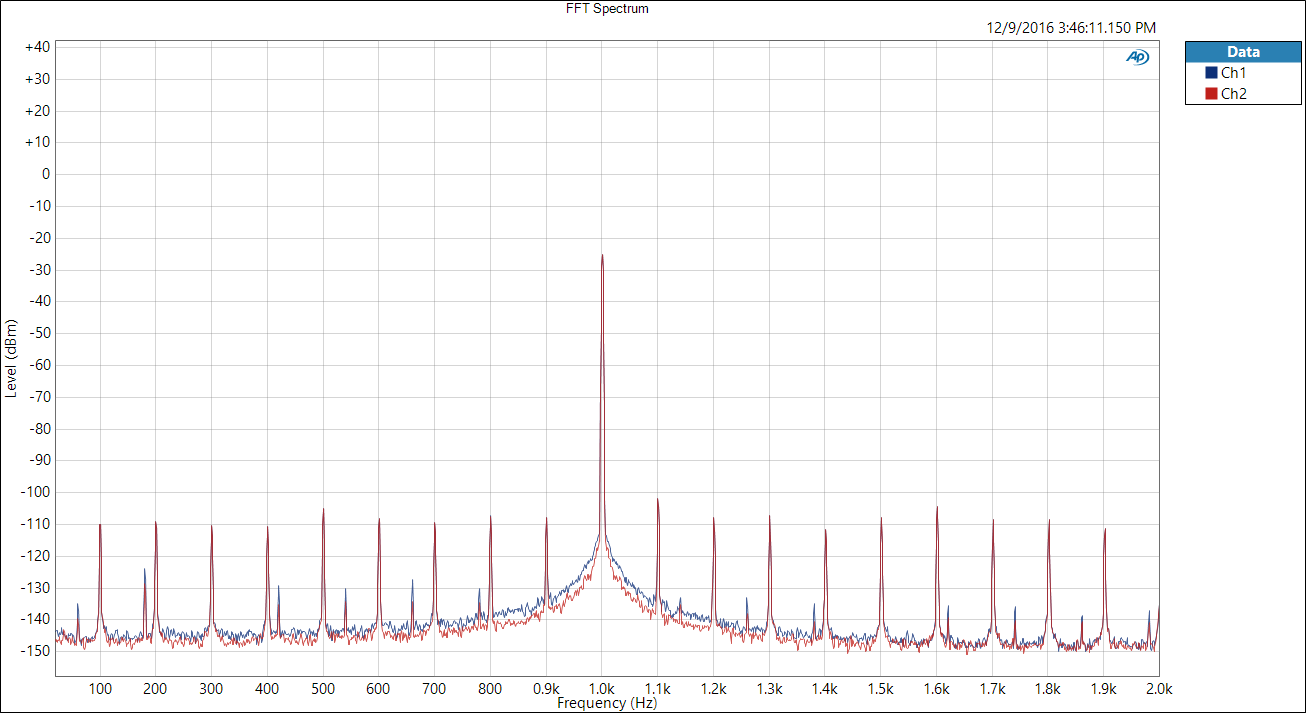
This is a high resolution FFT with sample averaging to reduce the impact of random noise and bring up artifacts out of the noise floor. The noise floor is actually very low for the Vega, but being a Delta-Sigma converter, it's not surprising to see some low level repeating artifacts- at -110 dB for 16 bit data, this is fairly good performance. Note the power line related noise harmonics at 60Hz, 180Hz, 420Hz, 540Hz, etc. These are likely due to noise on the DAC supply, or other pins, because if it was just straight power supply harmonics it would not be propagating at higher harmonics at this level. But, the overall level is very low- mostly below -130 dBM, so inconsequential.
Let's get down into the mud, and check out 1kHz at -90 dBFS input- this is just toggling the LSB around the zero line, and it's a range where many players and converters can have problems, either due to low level digital artifacts or just plain old analog noise in the converter and output stage.
1kHz @ -90dBFS input 16 bit data
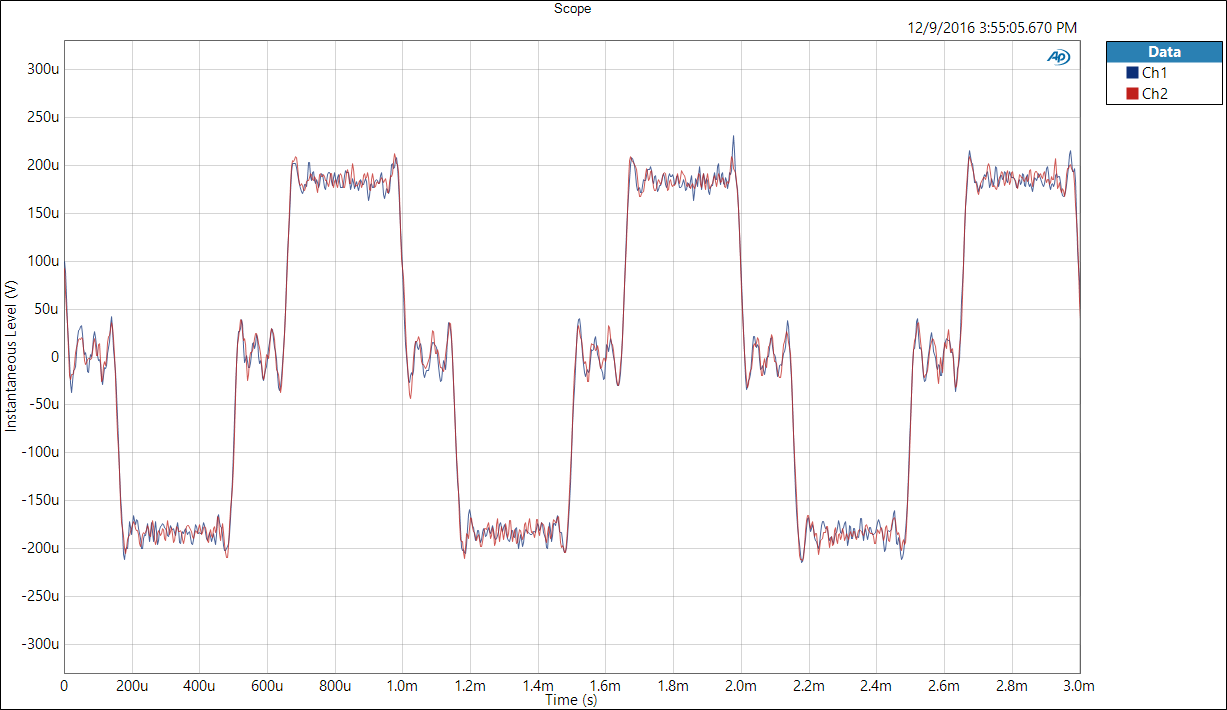
This is a very good result; it was measured with Filter 1, which is the symmetric ringing "standard" filter, and Gibbs pre and post ring on edges are clearly visible, and the levels are very clear with very low analog noise. It wasn't that many years ago when this level of performance on this test was only available with DAC's over the $10K price point. And often not then.
For contrast, here's the same test with 24 bit data- again, excellent results. The Vega has a very low analog noise floor.
1kHz @ -90dBFS input 24 bit data
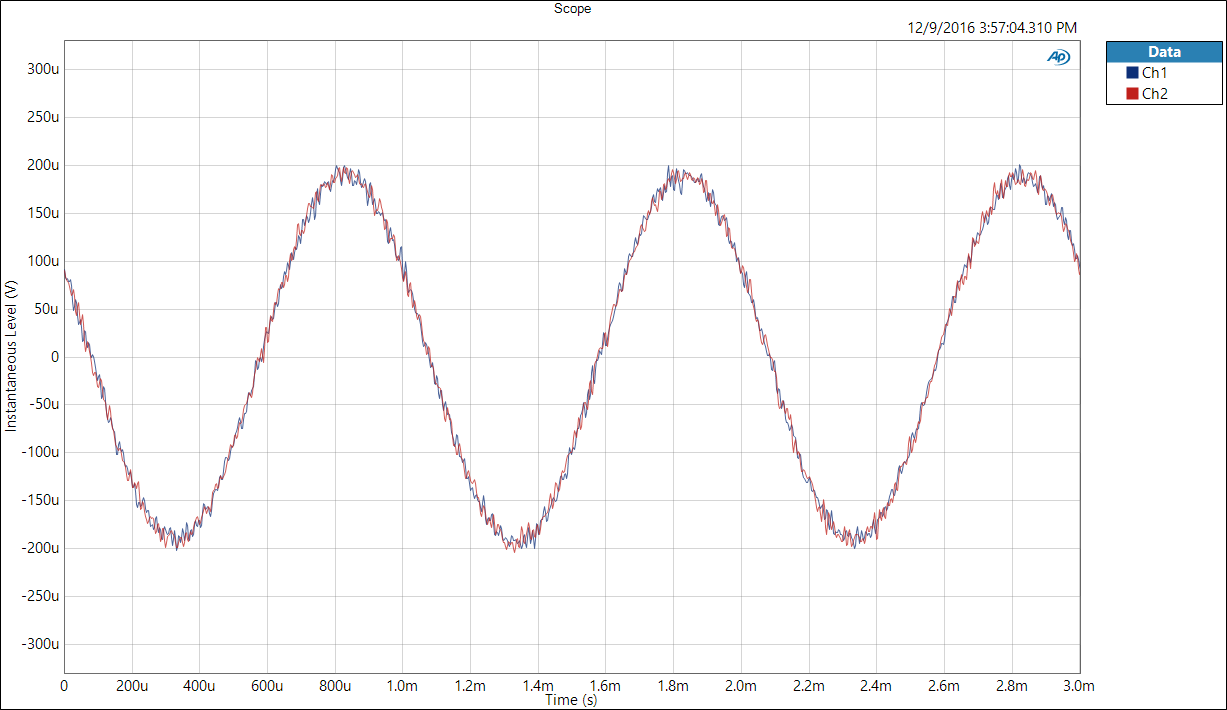
Please note the Y Axis values- this is reproducing a 400uV Pk-Pk signal! This is phonograph cartridge low output level stuff.
Let's look at that same signal with a high resolution FFT:
1kHz @ -90dBFS input, 24 bit data
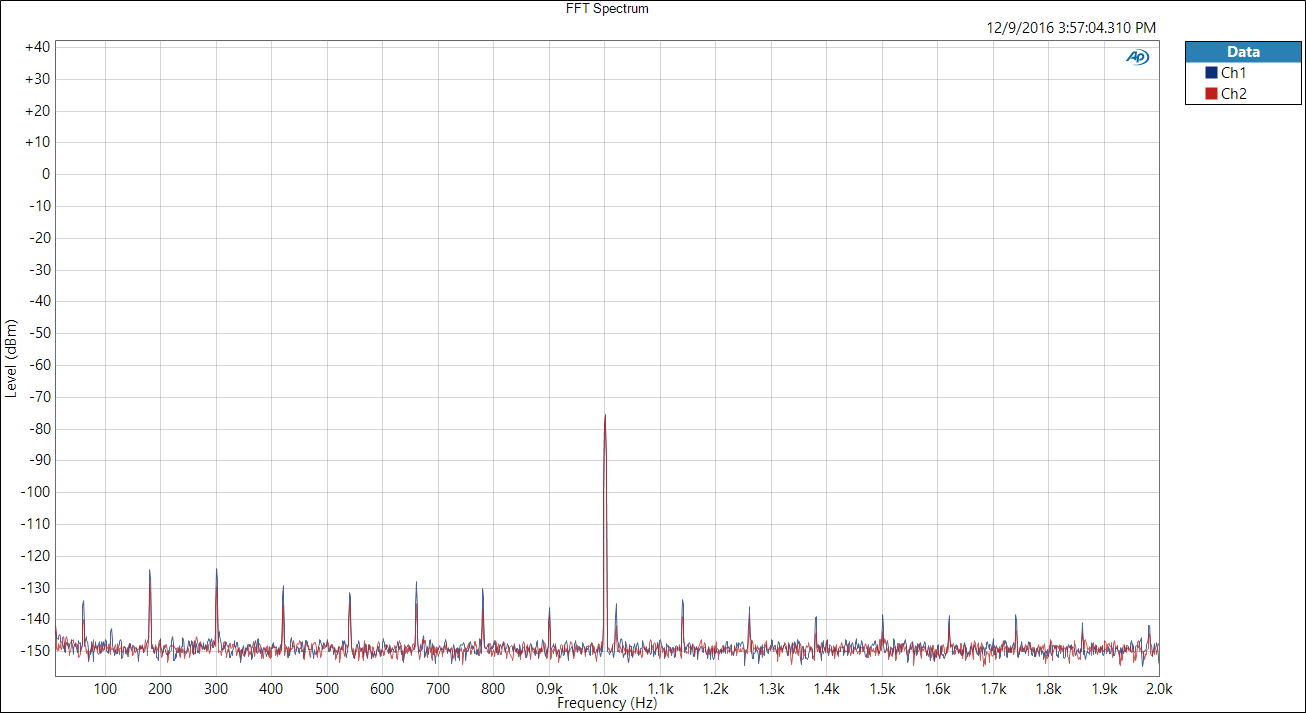
This is very good performance. Powerline frequency related artifacts are still visible, at -130 dB or less; this is inconsequential, and more a testimony to the sensitivity and resolution of the APx555 than any issue with the Vega.
Let's go back to 16 bit data, and have a look with high level low frequency input, 50Hz at -6dBFS.
50Hz, -6 dBFS input FFT
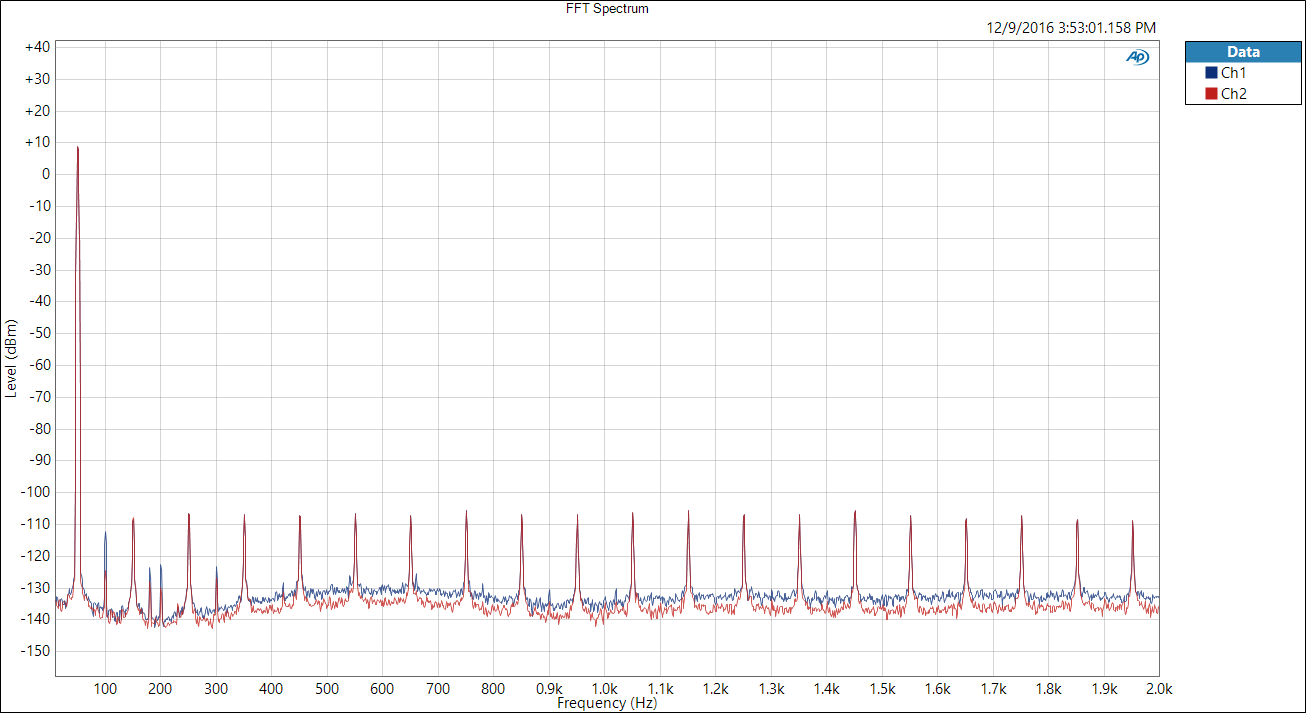
Once again we see some delta-sigma noise shaping artifacts at low level, along with some power line artifacts, and a high noise floor (to be expected for 16 bit data). Still, this is very good performance, and reflects an exceptional analog stage.
Last, let's check the high frequency torture test, 19kHz+20kHz CCIF IM (Intermodulation Distortion)
19kHz + 20kHz @ -10 dBFS each, 24 bit data, Filter 1 (should maximize image rejection)
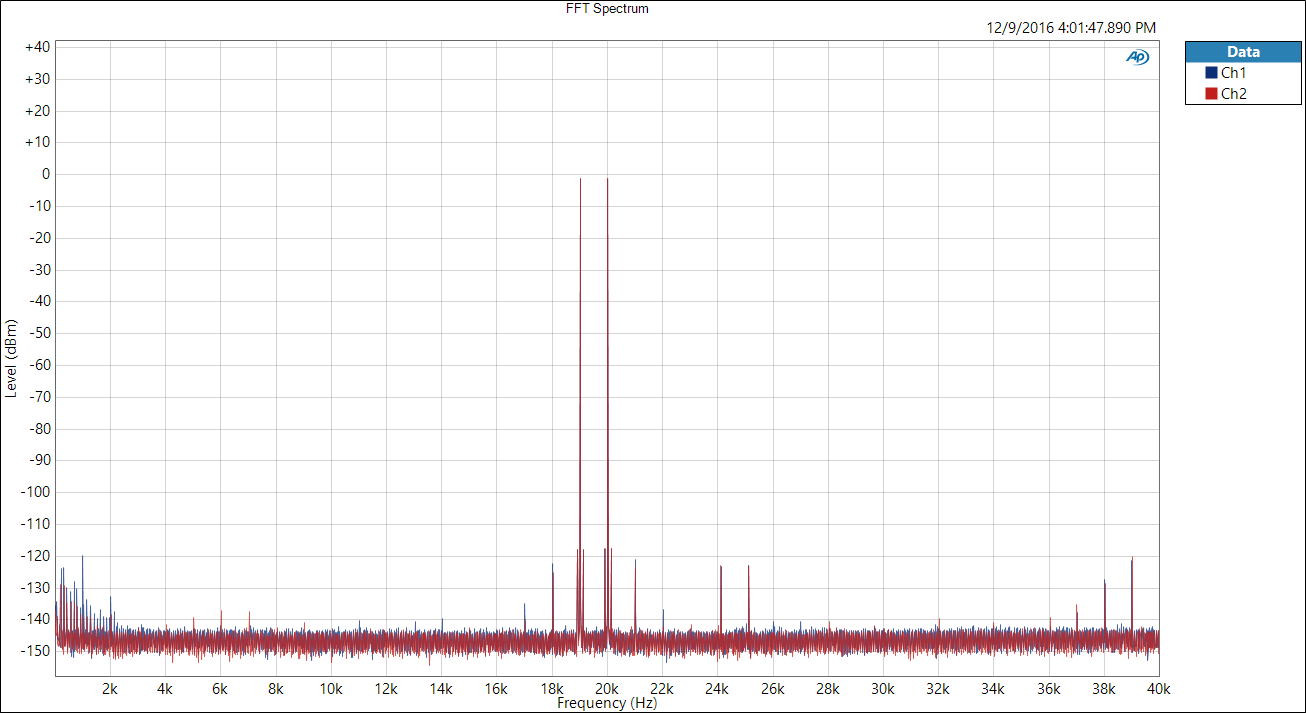
This is generally a very good result, side bands at the test frequency are below -120dB, a very low level, and so is image rejection.
Overall, this is the best measured performance I've ever seen with a product using the ESS Saber DAC. The Vega has a very low noise floor, (due to excellent analog design) and allows the DAC chip to deliver the best performance it's capable of.
My only quibbles:
The volume control is in the digital domain, and as with most system might usually be at the -20 to -30 level, I don't recommend using the Vega as a standalone unit driving power amps with 16 bit data sources- my listening tests and others confirm this - pair it with a good preamp, (a VERY good preamp if possible) and run the volume setting at 100. The volume control in the Cambridge 851D, operating in the Analog domain, does not degrade the digital resolution on 16 bit source data, so if you're funds limited and can't afford a nice analog preamp, you should really look at the 851 closely.
The USB input is very good, better than most DACs, but still not in my listening tests, the match for the Berkeley Alpha USB interface.
Overall the Vega has very good resolution without being bright or edgy- it's a very neutral and transparent DAC in this price range, especially at the clearance pricing I'm seeing lately. The digital filter selection offers opportunity to tune the response characteristics for different recordings- though for high sample rate material I generally preferred 1 actually, but on CD rate material 4, in spite of the additional image leakage- my system is tolerant of that.
All of this makes me wonder what their next DAC will be like...
IF you're looking for a DAC in this price range, it's certainly worthy to check out.

Comment